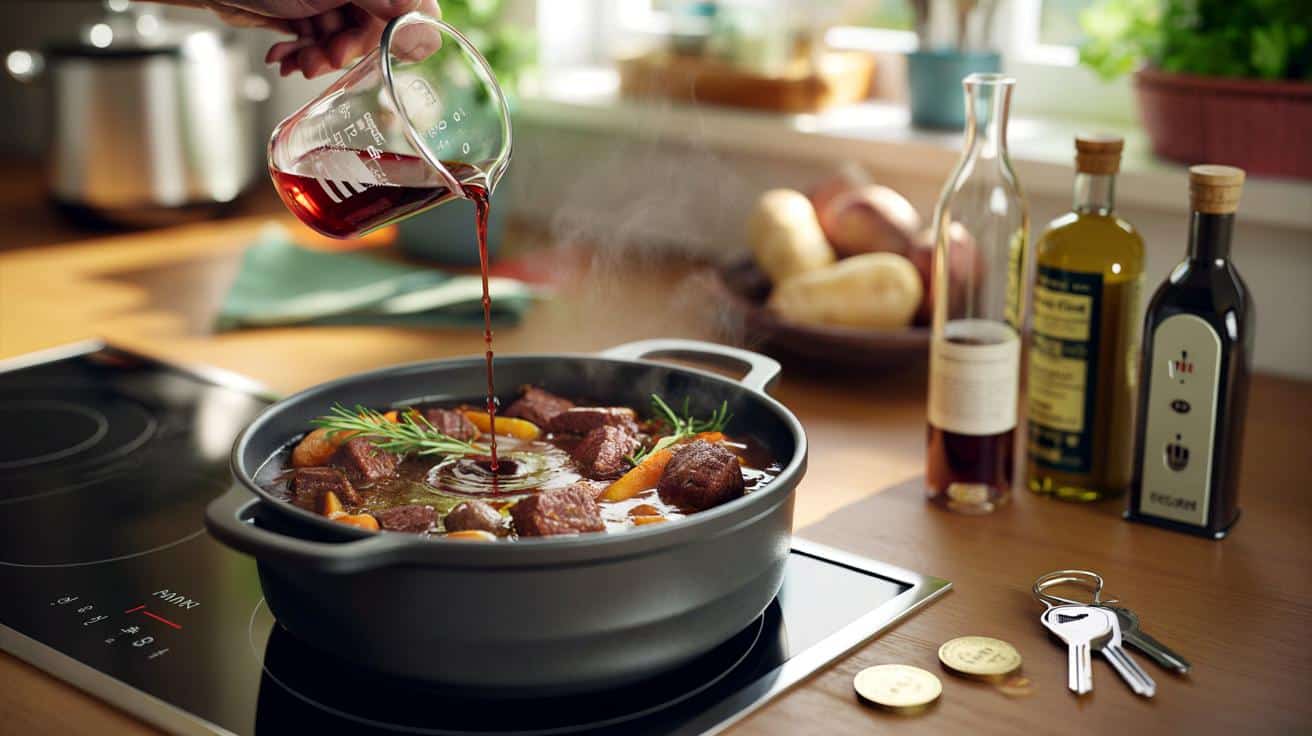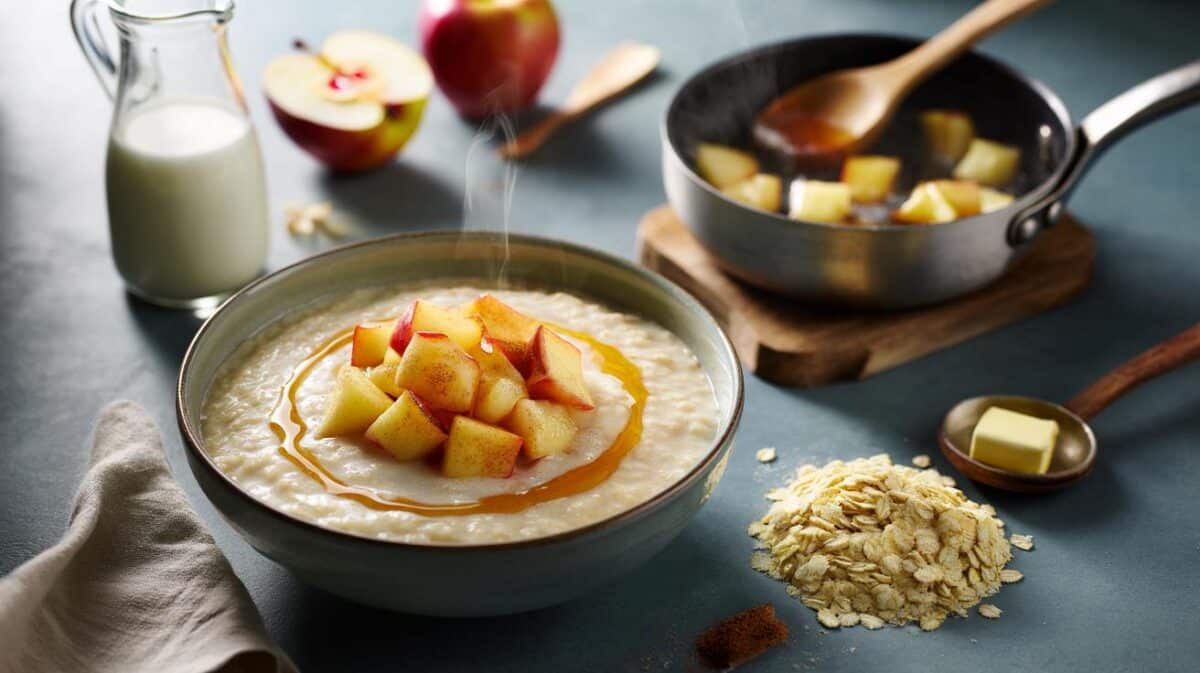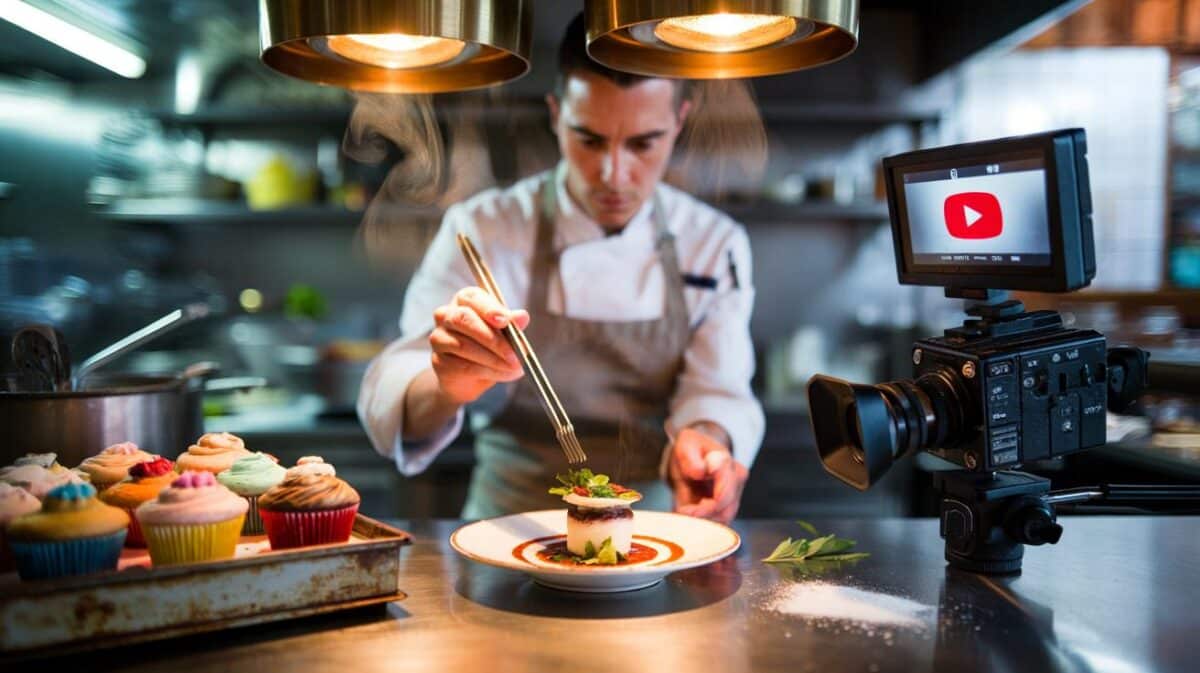Across butcher’s counters, one tip keeps coming up: add a measured splash of acidity while you cook. A modest 100ml of red wine, or a spoon or two of balsamic or cider vinegar, coaxes cheaper cuts to tenderness and lifts the gravy’s depth without any cheffy faff. It’s the kind of move that makes you feel clever and keeps the food bill in check.
What one small pour does to your stew
Beef contains tough connective tissue that breaks down with time and heat. A little acidity speeds that journey, loosening fibres so the meat turns spoon-soft while the gravy stays full-bodied rather than claggy. You also gain brightness, meaning the stew tastes beefier, not sharper.
Use 100ml dry red wine per 750g beef, or 1–2 tbsp balsamic or cider vinegar. Add early to deglaze, then let time do the work.
The butcher’s rule of thumb
- Ratio: 100ml red wine per 750g diced beef; for a no-wine route, 1–2 tbsp balsamic or cider vinegar.
- Timing: pour it in right after browning to dissolve the flavour-packed browned bits on the pan.
- Heat: long, gentle cooking softens any sharp edges and builds a glossy sauce.
- Finish: taste at the end; if the stew feels heavy, add up to ½ tsp extra vinegar to balance.
Step-by-step: make it richer tonight
These steps fit slow cooker or oven methods. The quantities suit a family pot and scale easily.
- Toss 750g braising beef with 2 tbsp plain flour, 1 tsp fine salt and black pepper.
- Brown in a hot film of oil, in batches, until deep mahogany. Don’t crowd the pan.
- Deglaze the pan with 100ml red wine (or 75ml stock plus 1 tbsp balsamic). Scrape up the browned bits.
- Combine with 1 chopped onion, 2 diced carrots, 2 diced celery sticks, 1 tbsp tomato purée, 2–3 rosemary sprigs and 400ml beef stock.
- Slow cooker: low for 8 hours, or high for 4. Oven: 160C/140C fan/gas 3 for 2½–3 hours, covered.
- Skim fat if needed. Adjust salt. If the sauce needs body, simmer uncovered 10–15 minutes or stir in a little cornflour slurry.
Browning builds flavour; the acidic deglaze captures it. Skip either step and you leave taste in the pan, not in the pot.
Which acid, how much and when
| Acid | Quantity (per 750g beef) | Flavour notes | When to add | Extra tip |
|---|---|---|---|---|
| Dry red wine | 100ml | Round, fruity, deepens savouriness | After browning, to deglaze | Choose a modest, dry bottle; no need for pricey labels |
| Balsamic vinegar | 1–2 tbsp | Sweet-tart, glossy finish | Half to deglaze; taste and adjust at the end | Older, thicker balsamic = richer sauce; reduce quantity slightly |
| Cider vinegar | 1–1½ tbsp | Clean, bright, cuts fattiness | After browning or in the last 10 minutes | Add a pinch of brown sugar if the stew tastes too sharp |
| Worcestershire sauce | 1–2 tsp | Tangy umami boost | With stock and purée | Pairs well with mushrooms for extra depth |
Budget maths: why this saves money
Because acidity softens tough fibres, you can pick shin, chuck or brisket rather than pricier “braising steak” labels. Many households report shaving 10–20% off a weekly shop by switching to these cuts and cooking them low and slow. The method turns collagen into gelatin, giving a silky mouthfeel without extra butter or cream.
Stretch the pot further with root veg and beans. Add parsnips, swede or a drained tin of cannellini beans in the final hour. You boost nutrition and portions with little extra spend.
Slow cooker or oven: choose your route
A slow cooker suits busy days. Load it in the morning, then ignore it. Keep the lid closed; each peek adds minutes. If the sauce runs thin, finish the last 30 minutes on high with the lid ajar.
An oven gives a slightly deeper flavour thanks to gentle evaporation. Use a heavy casserole with a tight lid. For a richer top, remove the lid for the last 20 minutes.
Seasoning moves that lift the finish
- Acid balance: if the stew tastes flat, add ½–1 tsp vinegar at the end and stir.
- Umami bump: a teaspoon of marmite or miso stirred in off the heat adds backbone.
- Silky gloss: swirl in a small knob of cold butter before serving.
- Freshness: a handful of chopped parsley or thyme stems stirred through wakes up the gravy.
Practical notes, safety and swaps
- Alcohol: long cooking evaporates most alcohol from wine. If you avoid alcohol, use stock plus vinegar.
- Gluten-free: dust beef with cornflour instead of flour; thicken with a cornflour slurry later if needed.
- No rosemary: bay leaves or thyme offer a classic savoury note.
- Pan choice: a wide pan browns faster and cleaner than a narrow pot.
Make it yours with simple additions
Mushrooms absorb winey juices beautifully; fry them until caramelised and stir in for the last hour. For a heartier bowl, add barley with an extra splash of stock and cook until tender. Peas or shredded cabbage can go in for the final 10 minutes for colour and bite.
Leftovers that feel like a new meal
- Stew pie: tip leftovers into a pie dish, cover with puff pastry, bake at 200C until golden.
- Pasta ragù: reduce the sauce a little, shred the beef, toss with rigatoni and a dusting of parmesan.
- Freezer plan: cool quickly, portion, and freeze for up to three months. Thaw in the fridge, reheat gently until piping hot.
Pressure cooker fans can adapt the method: brown as usual, add wine to deglaze, lock the lid and cook 35 minutes at high pressure with a natural release. The same acid rules apply and the sauce will still taste layered. If richness is your goal, the tiny, timely pour is the most efficient upgrade you can make to a beef stew, whether the heat comes from a slow cooker, oven or pressure cooker.









Tried the 100ml red wine on shin last night — wow, spoon-soft and not sharp at all. The deglaze tip is definately gold, and the gravy had proper depth. New weeknight keeper.